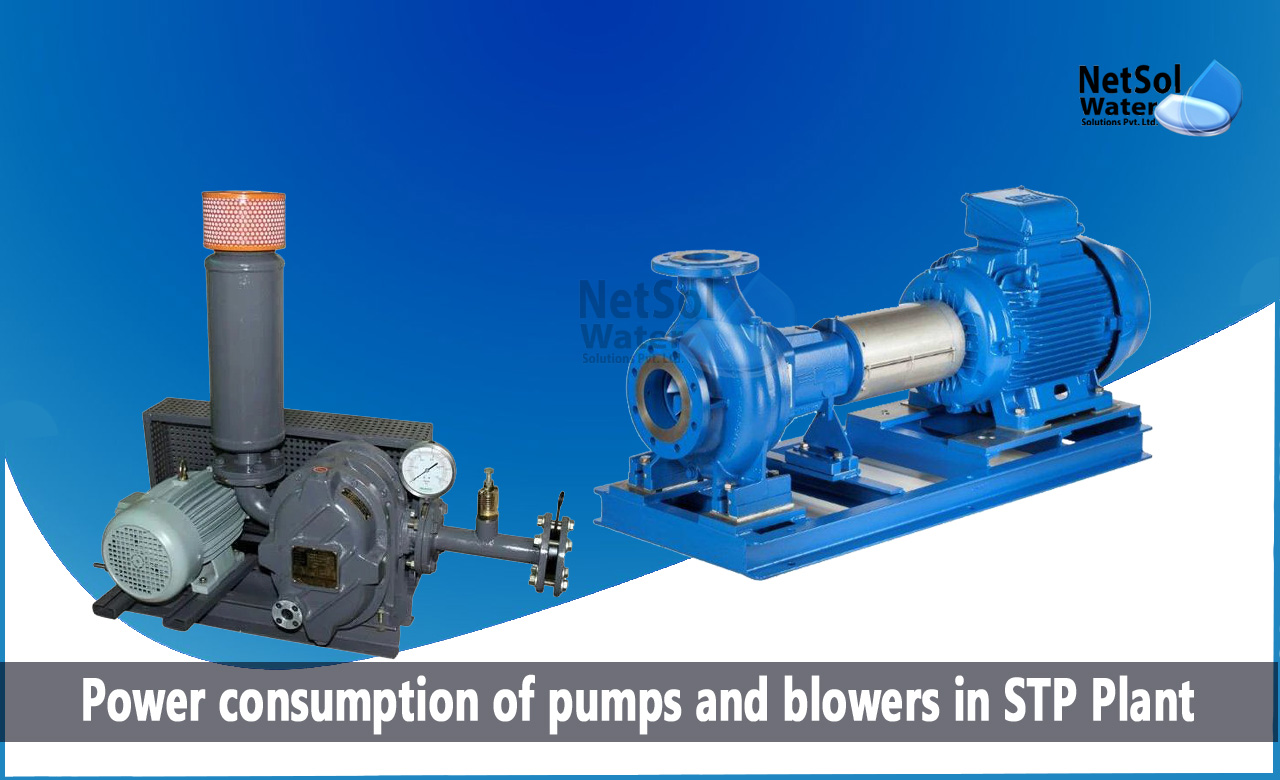Sewage treatment plants are essential infrastructure for ensuring public health and the protection of the environment. These facilities are designed to remove contaminants from wastewater before it is discharged into the environment. A critical component of sewage treatment plants are the pumps and blowers that move and aerate the wastewater throughout the treatment process.
In this blog, we will discuss the power consumption of pumps and blowers in detail, providing examples for various capacities of sewage treatment plants.
Power consumption of pumps, blowers in STP Plant detailed calculations
Pumps are used to move wastewater through various stages of treatment, including primary treatment, secondary treatment, and disinfection. The power consumption of pumps varies based on several factors, including the flow rate of the wastewater, the head pressure required to move the wastewater, and the efficiency of the pump. The flow rate of wastewater is measured in cubic meters per hour (m3/h), and the head pressure is measured in meters (m). The efficiency of pumps is measured in terms of the pump's hydraulic efficiency, which is the ratio of the pump's water output to its energy input.
The power consumption of pumps can be calculated using the following formula:
Power (kW) = Flow rate (m3/h) x Head pressure (m) x Specific gravity x Pump efficiency
Where Specific gravity is the density of the fluid being pumped and Pump efficiency is the ratio of the pump's water output to its energy input.
Let's consider an example of a sewage treatment plant with a capacity of 500 m3/h. The plant has four pumps, each with a flow rate of 125 m3/h, a head pressure of 10 m, and a pump efficiency of 80%. Assuming the specific gravity of the wastewater is 1, the power consumption of each pump can be calculated as follows:
Power (kW) = 125 x 10 x 1 x 0.8 = 1000 kW
Therefore, the total power consumption of the four pumps is 4000 kW.
Blowers are used in sewage treatment plants to provide oxygen for the biological treatment of wastewater. The power consumption of blowers varies based on the volume of air required for aeration and the pressure required to deliver the air to the treatment process. The volume of air required for aeration is measured in cubic meters per minute (m3/min), and the pressure required is measured in kilopascals (kPa).
The power consumption of blowers can be calculated using the following formula:
Power (kW) = Airflow rate (m3/min) x Pressure (kPa) x Specific gravity x Blower efficiency
Where Specific gravity is the density of the air being delivered and Blower efficiency is the ratio of the blower's air output to its energy input.
Let's consider an example of a sewage treatment plant with a capacity of 1000 m3/h. The plant has four blowers, each with an airflow rate of 100 m3/min, a pressure of 50 kPa, and a blower efficiency of 70%. Assuming the specific gravity of the air is 1.2, the power consumption of each blower can be calculated as follows:
Power (kW) = 100 x 50 x 1.2 x 0.7 = 4200 kW
Therefore, the total power consumption of the four blowers is 16,800 kW.
Conclusion:
In conclusion, the power consumption of pumps and blowers in sewage treatment plants can be calculated using formulas that consider the flow rate, head pressure, and efficiency of the equipment. It is essential to consider power consumption during the design and operation of sewage treatment plants to ensure efficient and cost-effective treatment processes.
Netsol Water is Greater Noida-based leading water & wastewater treatment plant manufacturer. We are industry's most demanding company based on client review and work quality. We are known as best commercial RO plant manufacturers, industrial RO plant manufacturer, sewage treatment plant manufacturer, Water Softener Plant Manufacturers and effluent treatment plant manufacturers. Apart from this 24x7 customer support is our USP. Call on +91-9650608473, or write us at enquiry@netsolwater.com for any support, inquiry or product-purchase related query.



